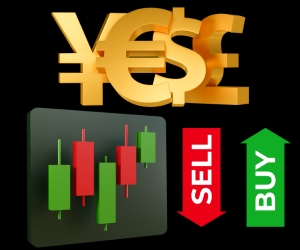WHAT IS IMPLIED VOLATILITY IN FOREX
Discover how implied volatility in Forex can influence your trading operations and how you can leverage it to maximize profits.

Relationship Between Implied Volatility and Options
Implied volatility is somewhat like the horoscope of the Forex market, suggesting what is to come. But how does it connect with options? Let's take a look.
Basic Concept
Implied volatility measures the market's expectations of how volatile an asset will be. In the case of Forex, this can be linked to currency options, where prices are more volatile than a cup of coffee before bedtime.
Option Pricing
Implied volatility is a key part of calculating the price of options. If you live under the belief that math is only there to give you a headache, think again: it directly affects how much you will pay for an option.
Uncertainty Factor
When levels of uncertainty rise, implied volatility ascends like a helium balloon. This translates into higher premiums for options, as investors are willing to pay more for protection against potential turbulence.
How to Measure Implied Volatility
Measuring implied volatility is almost like searching for the Holy Grail of trading. You need the right tools and a bit of skill. Let's break it down.
Mathematical Models
Models like Black-Scholes aren't just for math geeks. These models allow you to estimate implied volatility by calculating how an option contract is valued based on different market variables.
Trading Platforms
Nowadays, most trading platforms already offer data on implied volatility. It's like having a financial robocop on your computer, always ready to show you the way.
Technical Indicators
Indicators like Bollinger Bands can provide insight into changes in volatility. They allow traders to get a clear idea of whether an asset is about to make "the great escape."
Comparative Analysis
Comparing different options can reveal valuable insights about market expectations, a perhaps less obvious method that will leave you smiling after positive results.
Strategies Based on Volatility Changes
Understanding and interpreting implied volatility is just the beginning. The real magic lies in applying this knowledge in strategies that make you feel like a Wall Street wizard.
Proactive Risk Management
The key is to adjust your exposure according to volatility expectations. Some traders use larger-than-normal option hedges to mitigate risks when forecasts are against them.
Opportunity Trading
The higher the implied volatility, the more opportunities you may have. Be prepared for a wild ride: trading volatility strategies are exciting but also complex.
Strategic Positioning
Adjusting positions in anticipation of expected volatility changes allows you to better capitalize on market movements. Some traders say this is better than the adrenaline of a regular trading day.
Prediction and Planning
Changes in implied volatility require quick reaction and planned foresight. Using predictive analysis can be the difference between executing a successful trade and watching from the sidelines.








